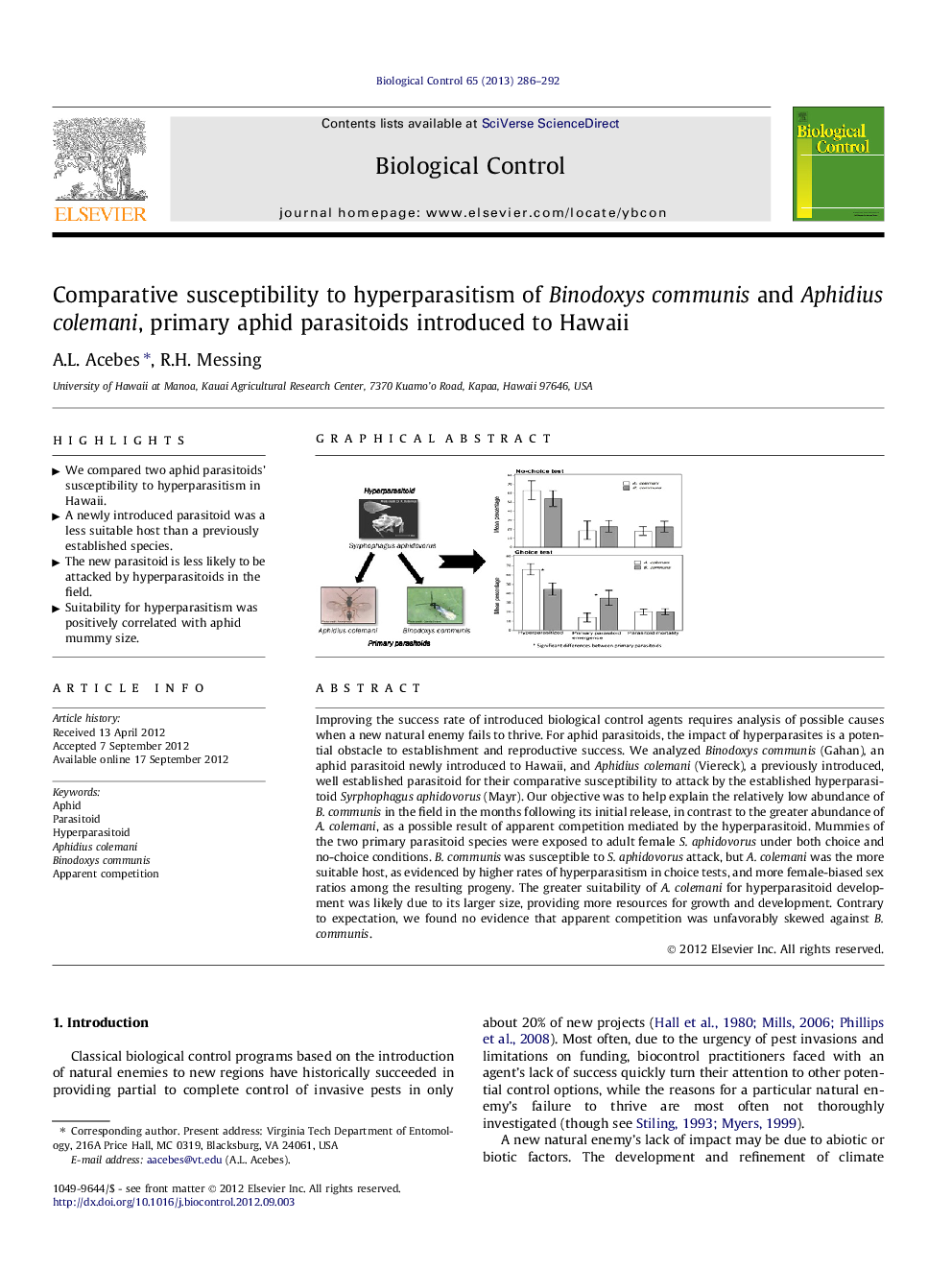| Article ID | Journal | Published Year | Pages | File Type |
|---|---|---|---|---|
| 4504021 | Biological Control | 2013 | 7 Pages |
Improving the success rate of introduced biological control agents requires analysis of possible causes when a new natural enemy fails to thrive. For aphid parasitoids, the impact of hyperparasites is a potential obstacle to establishment and reproductive success. We analyzed Binodoxys communis (Gahan), an aphid parasitoid newly introduced to Hawaii, and Aphidius colemani (Viereck), a previously introduced, well established parasitoid for their comparative susceptibility to attack by the established hyperparasitoid Syrphophagus aphidovorus (Mayr). Our objective was to help explain the relatively low abundance of B. communis in the field in the months following its initial release, in contrast to the greater abundance of A. colemani, as a possible result of apparent competition mediated by the hyperparasitoid. Mummies of the two primary parasitoid species were exposed to adult female S. aphidovorus under both choice and no-choice conditions. B. communis was susceptible to S. aphidovorus attack, but A. colemani was the more suitable host, as evidenced by higher rates of hyperparasitism in choice tests, and more female-biased sex ratios among the resulting progeny. The greater suitability of A. colemani for hyperparasitoid development was likely due to its larger size, providing more resources for growth and development. Contrary to expectation, we found no evidence that apparent competition was unfavorably skewed against B. communis.
Graphical abstractFigure optionsDownload full-size imageDownload as PowerPoint slideHighlights► We compared two aphid parasitoids’ susceptibility to hyperparasitism in Hawaii. ► A newly introduced parasitoid was a less suitable host than a previously established species. ► The new parasitoid is less likely to be attacked by hyperparasitoids in the field. ► Suitability for hyperparasitism was positively correlated with aphid mummy size.
